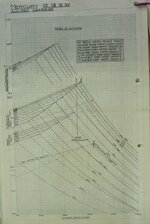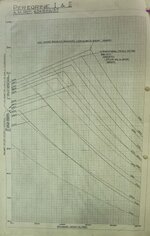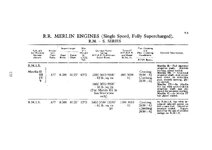Thank you for the tables.Of course
Air Mistry document AVIA 15-37
It is unclear how much was tested, how much estimated, certainly Morris radiators were ordered, and RR agreed the figures quoted.
Someone at RR seems to have made a typo when sending out the data on the Peregrine running at 100 oct fuel.
The way the high-octane fuel works is this:
- at lower altitudes, supercharger can supply much more air than the engine can take advantage of, so the engine is throttled, lest the engine will be unsafely over-boosted, and knocking will destroy the engine
- hi oct fuel improves the knocking threshold, so the engine can be safely (if shortly) over-boosted
- extra boost = more power
Note again that the advantages of the hi-oct fuel are mostly confined to the lower altitudes.
The typo I was talking above was that the 1015 (2030/2) HP per engine was realized at 10000-11000 ft, not at 20000-21000 ft, thus leading to the fine people at Westland to came out with the calculated performance figures as they did. As with Merlin and many/most of the other engines, the only way to improve high-altitude performance was to improve the supercharger - that never happened for the Peregrine.
If the 100 oct fuel was of any help well above the rated height for the 87 oct fuel, RAF would've been flying the 400 mph Spitfire Is and 350 mph Hurricane Is during the BoB, that was not the case. You can see here, for the Merlin III, that benefits of the 100 oct fuel (darker shade of blue) are not present above ~16000 ft. Also here is what Mercury engine gained via 100 oct fuel and the accompanying over-boosting (made a tad under 1000 HP at lower altitudes, but no change above ~14500 ft) - kindly provided by Neil Stirling; click on the thumbnail:

Perhaps S Shortround6 , W wuzak or E Engineman will want to correct me on this?
Also note that the expected speed figures for the Whirlwind I on April of 1940 start optimistically at 390 mph at 15000 ft - quite a difference vs. the 360 mph figure that seems to be standard for the series-produced examples
Strangely in view of past debate regarding Rotol or DH propellers, it was considered straightforward to increase the pitch angle of the DH propellers without any major problem. What might have been, but the beauracracy was tremendous!
How many aircraft gained more than 10 mph (or even 5 mph?) due to the increase of the pitch angle of their respective props?
Last edited:


